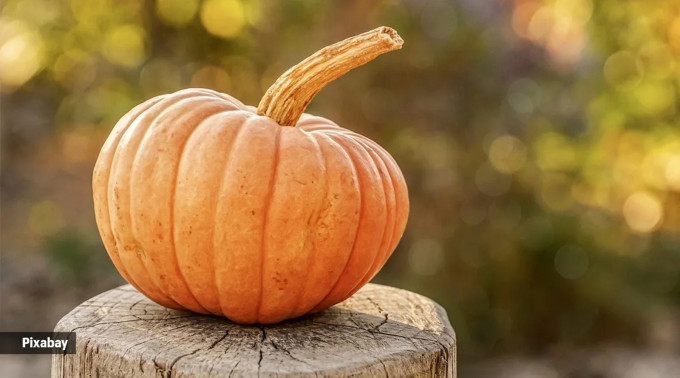Pachadi: Relish this South Indian pickle that has been around for over 1,500 years
If there’s one cuisine that unites Indians across the world, give or take an outlier or two, it’s what is referred to as “South Indian” cuisine, primarily consisting of idli, vada and paper or masala dosa with coconut chutney and sambar. It’s only recently, in the last decade or so, that people have discovered that, much like Indian cuisine encompasses multitudes of regional cuisine––and not just butter chicken and chicken “teeka” masala and dal makhni and naan––South Indian cuisine is also diverse. It includes Andhra, Tamil, Mayayali, Syrian Christian, Moplah cuisines, to name a few, each with its own repertoire of dishes, masalas, and flavour profiles.
There is one common dish that I’ve seen across most types of “South Indkarnian” cuisine, and I absolutely love it because there are so many versions of it: pachadi. Best described as a freshly made relish or pickle with vegetables, pachadi varies by region and may or may not include yoghurt. The word roughly translates to a plant that has been pounded or crushed, and is usually served cold as an accompaniment to hot food.

While I discovered pachadi late in life, it has been around for centuries. A book named Soopa Shastra — written by King Mangarasa III in the 15th century — documents vegetarian food from Karnataka and mentions pachadi. It also mentions another favorite of mine: the balaka, found in “South Indian” restaurants everywhere, made by soaking large red chilis in salt water, drying them, and then frying them in oil to crush over your food. The pachadi mentioned here is a curd-based relish prepared with greens and raw vegetables. Another Kannada document from 1485 mentions kings eating pachadi at feasts.
Enough of history; let’s get down to how to prepare a pachadi that will knock your socks off. This dish is fairly easy to put together since there’s no real cooking involved. Plus, since it’s served cold, it’s perfect for the hot summers. I recently had the most delightful mustard pachadi at a friend’s house, which is why the dish is at the tip of my tongue this week. There are many recipes to choose from. For example, in Karnataka, they make a delicious pachadi with ginger paste in curd, while in Kerala, you can find a curd pachadi made with pumpkin. The Nairs in Kerala serve a variety of pachadis at their wedding feasts.
Here are two pachadis I love making and serving at home.
Radish and yoghurt pachadi
• 100 ml hung curd
• 100 gm radishes which have been grated and the liquid squeezed out
• Salt to taste
• ½ tsp roasted cumin seeds
• 5-6 fresh mint leaves – chopped
• 1 green chili – chopped fine
Simply mix all the ingredients, and chill for at least an hour before serving.
Sweet mango pachadi
I chanced upon this sweet mango pachadi or mangai vellam pachadi in The Bangala Table Cookbook, dedicated to Chettinad cooking. It’s a festive dish and always served at lunch – never at dinner. But you go ahead and do what you want, no pachadi police will judge you.
2 green mangoes – peeled and chopped into bite-sized pieces
¼ teaspoon salt
150 gms – jaggery
 In Kerala, you can find a curd pachadi made with pumpkin. (Photo: Pixabay)
In Kerala, you can find a curd pachadi made with pumpkin. (Photo: Pixabay)
For tempering
2 tablespoons oil
1 ¼ tsp black mustard seeds
6 dried red chilis
1 tsp urad dal
10-15 curry leaves
In a saucepan, heat a cup of water, then add the mango and salt. Increase the heat until the water starts boiling. Cook for five to seven minutes until the mango is soft.
Reduce the heat to low, add the jaggery, and stir very gently to avoid mashing the mangoes. If the mixture starts sticking to the pan, add a few tablespoons of water.
In a separate pan over medium heat, heat the oil for tempering. When hot, add the mustard seeds, followed by the red chilis and urad dal. Ensure the chilis do not burn.
Pour this oil mixture over the mangoes and stir well.
Serve at room temperature. It’s perfect with some dal and rice and a mildly spiced vegetable or chicken korma.
ALSO IN THIS SERIES:
From taboo to tradition, how paneer found a place in Indian cuisine
Garam masala: Bringing a little heat into the kitchen and your dishes
Is vegetable biryani just dolled up pulao? Which came first?
Cutting chai to Earl Grey tea: Journey of the Chinese hot beverage to India via Britain
‘Ande ka funda’: A deep dive into the history and popularity of eggs in India
Next week, I’m going to move away from history and look at the world of tempering and tadka. This is triggered by the fact that a friend I was speaking to, who loves good food and asks for recipes, was very confused by what I meant by tempering. I’ll also talk about the kind of spices used and different regional versions.
📣 For more lifestyle news, click here to join our WhatsApp Channel and also follow us on Instagram
Disclaimer: The copyright of this article belongs to the original author. Reposting this article is solely for the purpose of information dissemination and does not constitute any investment advice. If there is any infringement, please contact us immediately. We will make corrections or deletions as necessary. Thank you.

